Racial Disparities in Mental Health Treatment
Individuals with a mental health illness in the United States can face fragmented or unavailable services, high costs, and social stigma. It is particularly difficult for people of color to receive adequate and culturally appropriate treatment. Mental health disparity refers to a discrepancy in health, health services, and health determinants. Multiple studies have found that racial and ethnic minorities face these disparities even after controlling for variables like income, insurance status, age, and symptom expression.
Barriers for minorities with mental illness include:
- Different cultural perceptions about mental illness and well-being
- Racism and discrimination
- Being more vulnerable to being uninsured
- Cultural differences in help-seeking behaviors
- Language and other communication barriers
- Fear and mistrust of treatment
Often, service providers apply the same cultural lens to minorities as they do to non-minorities, which can limit mutual understanding, and result in inaccurate diagnoses. This type of miscommunication is particularly likely for individuals who speak a foreign language at home.
A significantly higher percentage of foreign-born, or U.S.-born African-Americans, American-Indians, Alaskan Natives, and Latinos are uninsured, compared to whites. These same minority groups often have relatively lower levels of education and income than other groups (including Asian-Americans), which is a factor in mental health care disparity, but again, even controlling for income and education level, these groups generally face greater barriers to access along with poorer treatment.
To illustrate these disparities, please refer to the following graphics:
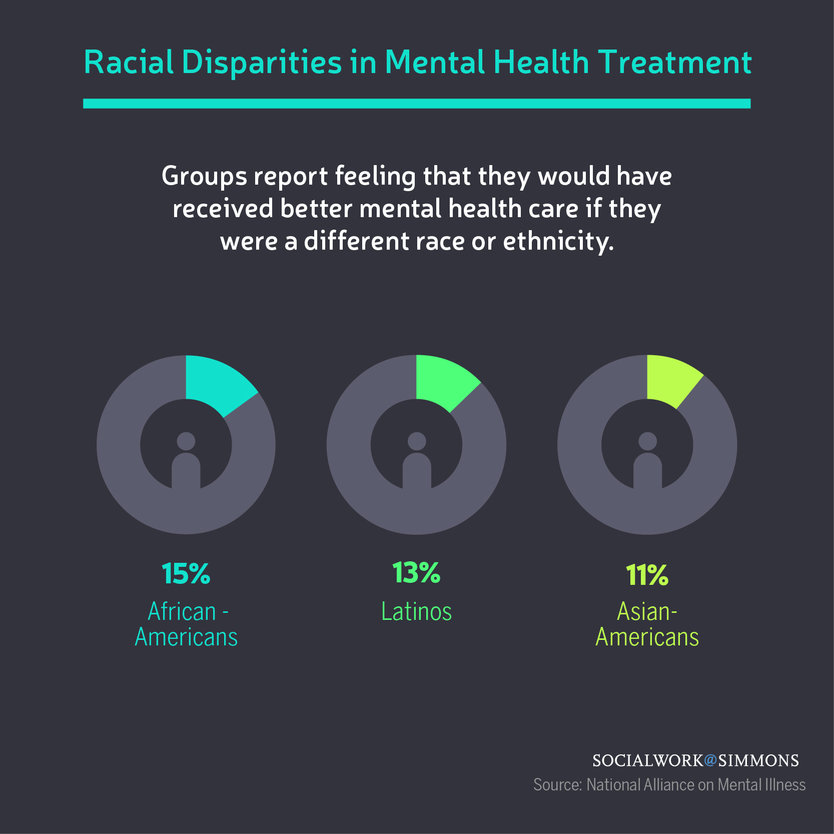
Source: National Alliance on Mental Illness
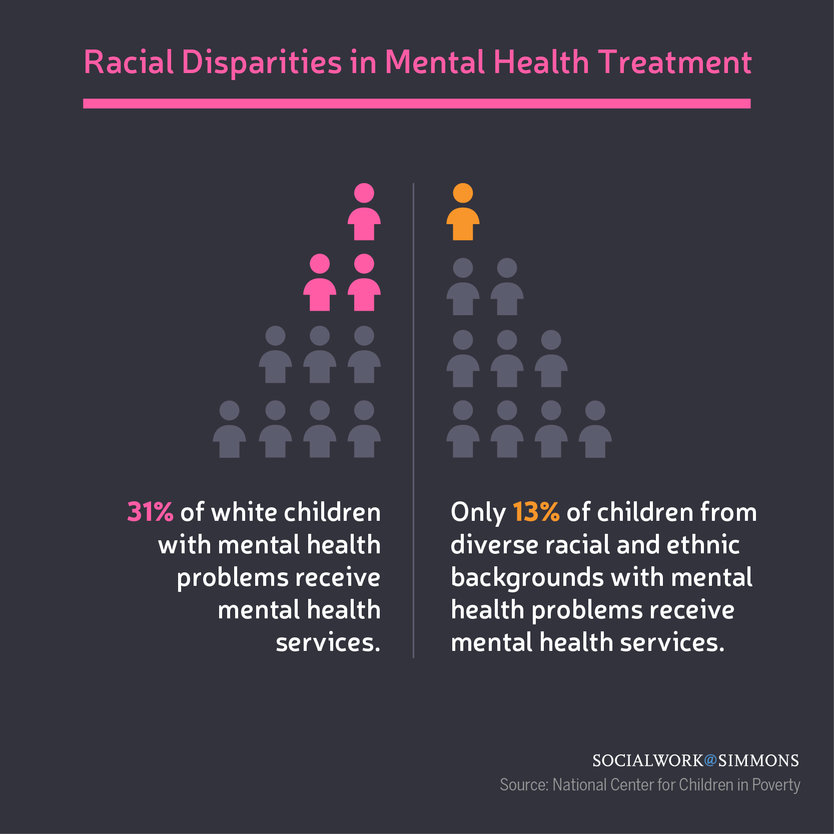
Source: National Center for Children in Poverty
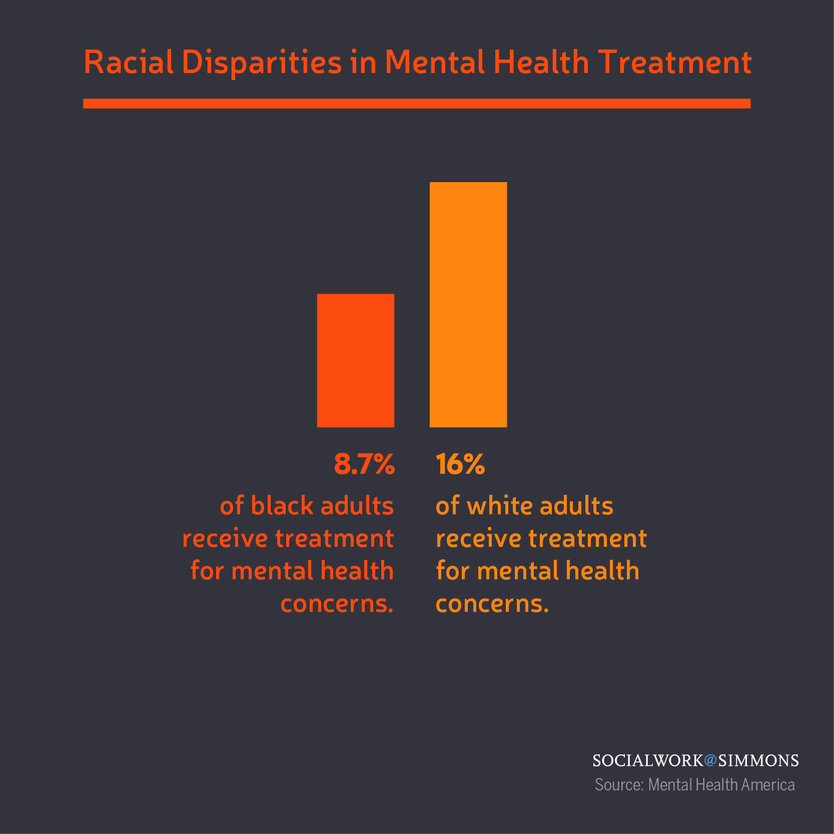
Source: Mental Health America
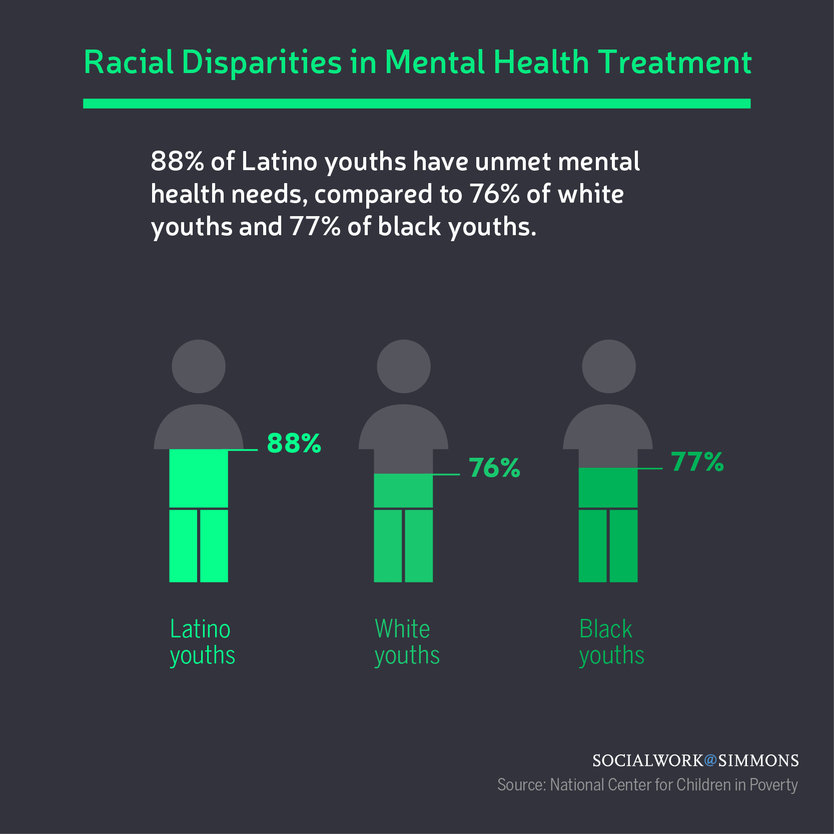
Source: National Center for Children in Poverty
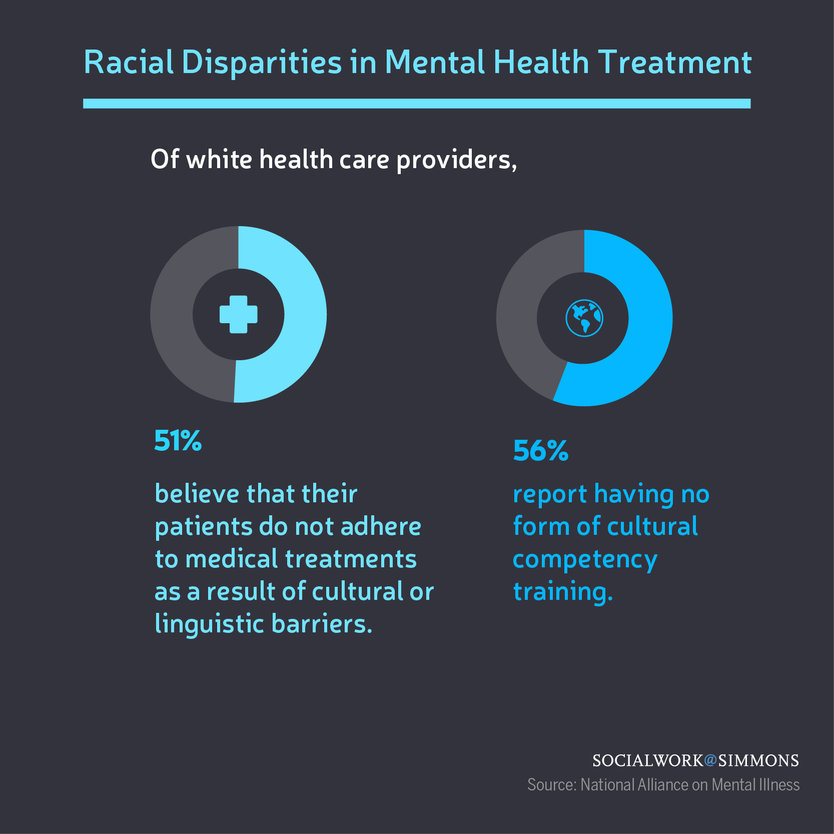
Source: National Alliance on Mental Illness
Addressing the Issue
In 2001, the Surgeon General documented the barriers to treatment for ethnic minority groups. Subsequent research supported these findings, resulting in the President’s New Freedom Commission on Mental Health in 2003. The Federal Collaborative for Health Disparities Research, the Institute of Medicine, and the National Institute of Health (NIH) have all since made mental health disparity a research priority. These institutions, along with the American Psychology Association and the National Alliance on Mental Illness (NAMI) have similar recommendations about what needs to be done to eliminate minority mental health disparity in the United States.
Some of these recommendations include:
- Greater emphasis on culturally competent services — that is, services that incorporate and appropriately respond to those for whom English is a second language, and inclusive of diverse traditions, histories, values, and beliefs
- Increase awareness of and combat stigma surrounding mental health illness in minority communities
- Check out Dior Vargas’ POC & Mental Illness Photo Project
- Increase research efforts that examine the relationship between and intersection of minority identity, status, and cultural backgrounds
Despite the pledges during the past 10 years from major national institutions to prioritize and eliminate mental health disparity, progress has been slow. Continued emphasis on improving culturally competent service, as well as further research, and programs that combat mental health stigma in minority populations are all important steps in reducing mental health disparity.
For more information, visit NAMI’s Eliminating Disparities in Mental Health: An Overview.


